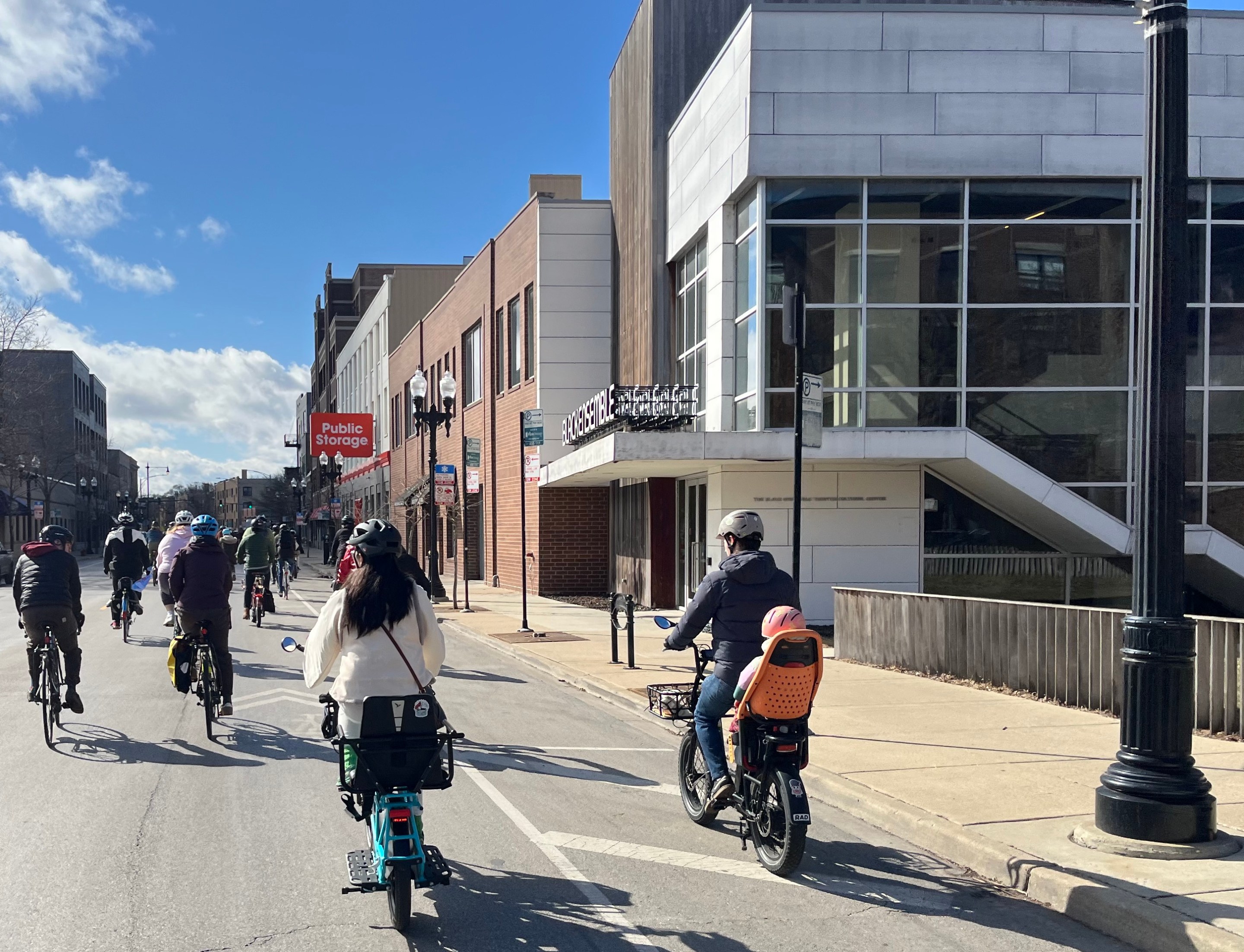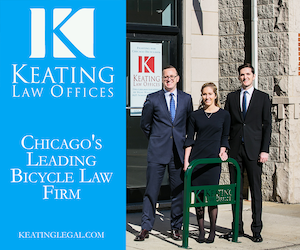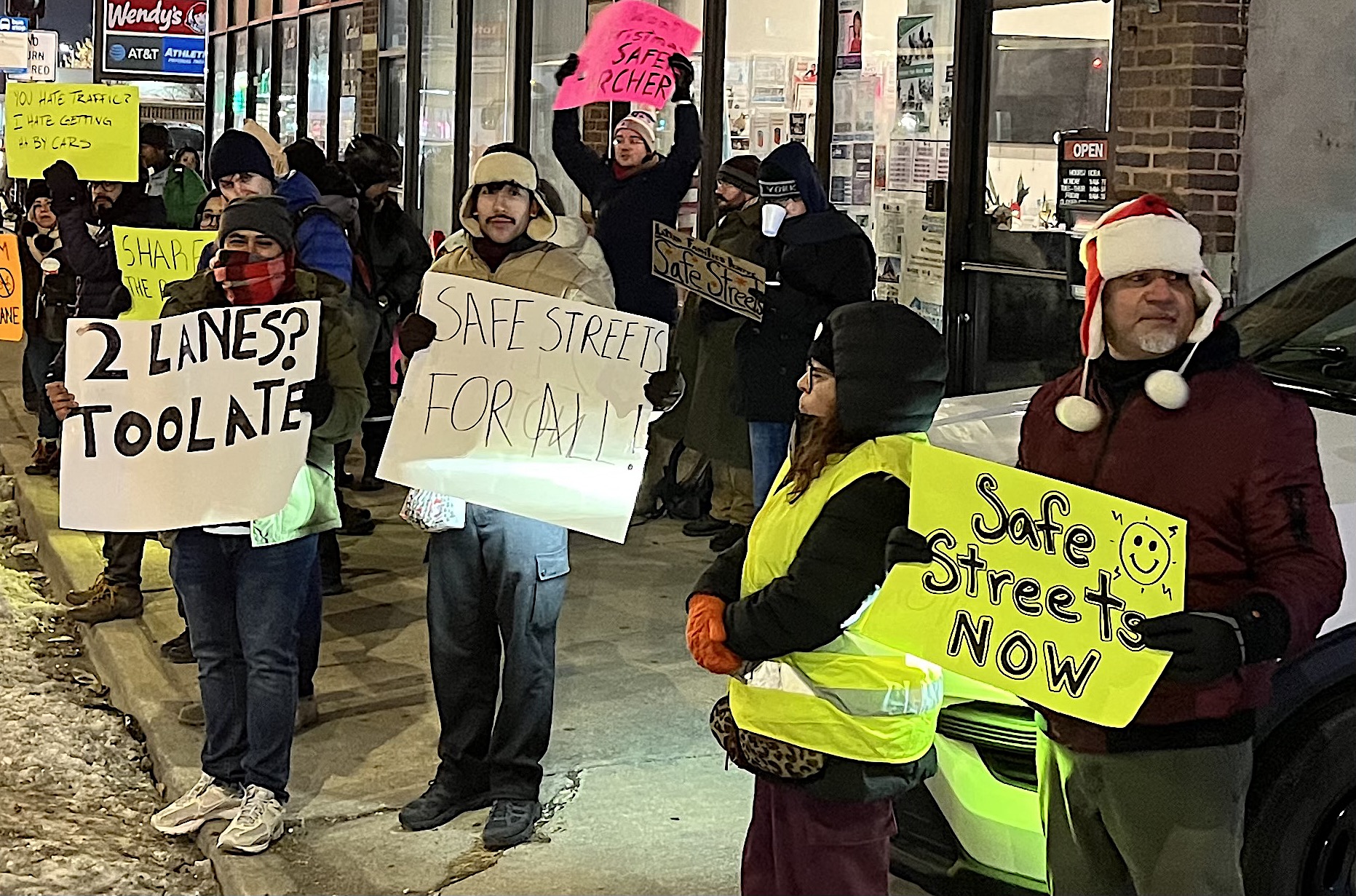
"Everybody's going Uptown
That's where I want to be
Uptown
Set your mind free...
As soon as we got there good times were rolling
White, Black, Puerto Rican, everybody just a-freakin'"
- Prince, "Uptown"
That tune by The Purple One refers to a neighborhood in his hometown of Minneapolis. But the lyrics also bring to mind the free-spirited vibe, diverse demographics, and bike-friendliness of Chicago's Uptown community.
There was a similarly open-minded attitude at Monday's Beacon Block Club online meeting "to learn about the City's plan for traffic and bike lanes, on Clark Street, from Montrose to Winnemac." (Disclosure: SBC headquarters is located on Beacon Street, I'm a card-carrying member of the block club, and I was granted permission to report on the hearing.)
The positive atmosphere at the meeting was a pleasant surprise, given recent "Controversey" over the bikeway proposal, which I'll discuss in a bit. (Moving forward, I'll avoid references to His Royal Badness.)
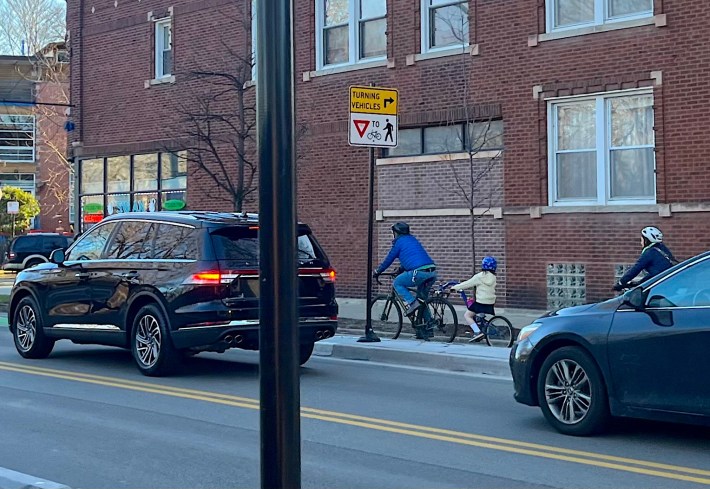
At this point, most Streetsblog readers are probably familiar with the Chicago Department of Transportation's proposal to install protected bike lanes on the 0.8 mile stretch of Clark Street between Montrose and Winnemac avenues. In a nutshell, this would be an extension of the existing 0.5 miles of PBLs between Irving Park Road and Montrose next to Graceland Cemetery, which I've nicknamed the "Graceland Greenway".
Protected bike lanes don't just shield bicycle riders from reckless, intoxicated, and distracted drivers. They also shorten pedestrian crossing distances and calm traffic by narrowing mixed-traffic lanes. That makes it less likely motorists will get in a crash with another road user. So PBLs are really a win-win-win scenario.

As was the case with the Graceland Greenway, the "Uptown Extension," as I call it, would involve swapping one of the car parking lanes to provide enough right-of-way for the protected lanes. That was relatively uncontroversial south of Montrose, since few drivers were parking next to the graveyard anyway.
North of the Montrose border, the idea of swapping car storage space for people space is raising more eyebrows. Montrose-to-Winnemac has some retail, but not nearly as much as the dense Andersonville shopping district north of there. CDOT found that only "30 percent of the on-street parking spaces on Clark are occupied on an average weekday." That means, even if 50 percent of existing curbside car spots are converted to bikeways, the other half will be more than enough.

Still, local windshield-centric "news sources" like Inside Publications and the Uptown Update anonymously insisted that the proposed street redesign would create carmageddon, with nowhere to store one's SUV. That's despite the fact a similar layout has worked out just fine on busier business strips such as Milwaukee Avenue in Logan Square, where the new infrastructure correlated with a 50 percent reduction in injury crashes.
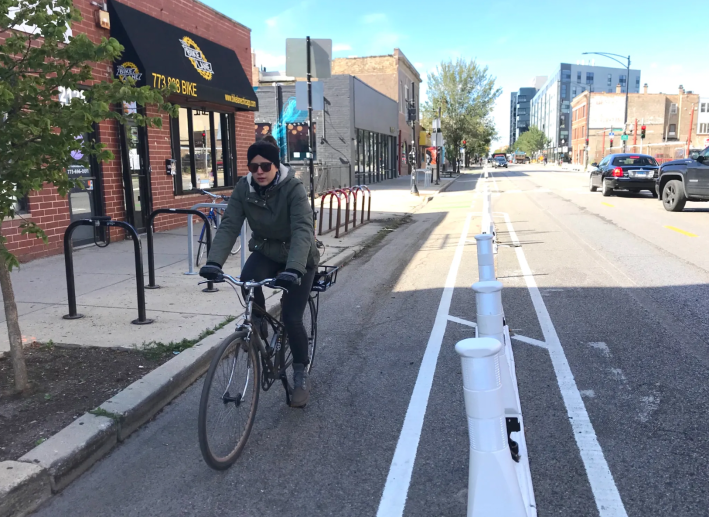
And there was further brouhaha about the PBL proposal prior to Monday's hearing, courtesy of yet another nameless motorhead. "Flyers stuck under windshield wipers on parked cars seem to indicate that Beacon Block Club is opposed to this project," said the meeting invite. "To be clear – those flyers were not from us... Beacon Block Club has not taken a position on CDOT's plan... We will learn more from the City at this informational meeting."
About 20 people attended Monday's hearing. I was pleasantly surprised that, unlike some community meetings about hot topics I've attended that devolved into shouting matches, just about everyone seemed well-informed and courteous.

Want to help ensure Streetsblog Chicago can keep publishing articles like this for another year? Please consider making a tax-deductible gift here. Thanks!
The Uptown Extension project area mostly runs between Ald. Angela Clay's 46th Ward and Ald. Matt Martin's 47th Ward. Clay's Director of Infrastructure and Development Jesse Orr led the presentation. He noted that part of Clark has an unsafe driving problem, with CDOT counting 700 speeding drivers in a single day, including one driving a shocking 66 mph past St. Boniface Cemetery.
"One of the big reasons for speeds like this is that low parking utilization can make a road feel very wide, which naturally leads drivers to speed," Orr noted. Therefore, consolidating the lightly-used parking on Clark should encourage safer driver. That was the case with the Graceland Greenway, which has seen a 75 reduction in speeding, according to CDOT.
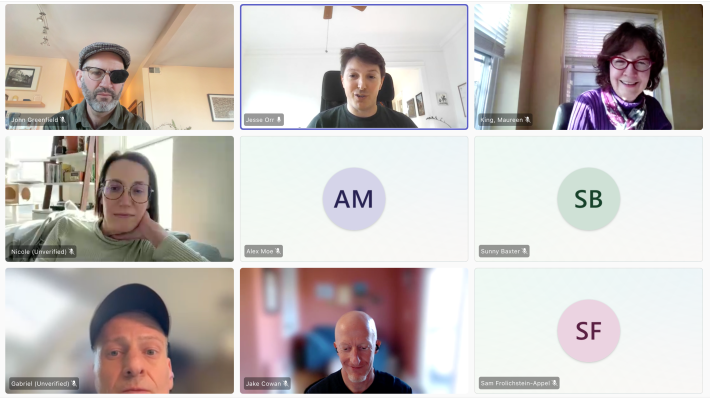
Orr said that, in response to feedback from businesses, CDOT's has tweaked its proposal for which side of the the street should retain parking spots where. "One of the key things that we're looking at is making sure that all businesses can keep their loading zones, or standing zones, or their daycare pickup and dropoff zones. "We're pretty happy to have gotten to a place where there is not a single business that will be losing its zone." While, near Leland Avenue, the department originally proposed keeping the parking on the west side of Clark, next to Chase park, the parking lane may be switched to the east side to serve medical and physical therapy practices.
There was much more discussion of that topic, and other details of the design intended to make it easier for the drivers of large vehicles like buses to navigate the corridor. One interesting possibility under consideration is to remove bus stops at some of the less busy locations like Sunnyside Avenue, a block north of Montrose, to free up a few more parking spaces. "I like the idea of consolidating bus stops," one attendee said in the chat. "This is a good way to speed up the bus."
Orr said he's touched base with folks from just about every business along the corridor that's open during normal business hours, as well as Carol's Pub, Rayan's Liquor's, and the Black Ensemble Theater. He said 47th Ward Chief of Staff Josh Mark has met with representatives of Pick Me Up Cafe, My Buddy's Bar, and Max's Place.
You'll notice there are a few bars on that list, and the corridor also includes the SoFo Tap and the Meeting House Tavern. Orr said the tavern owners are generally enthusiastic about making it easier to walk and bike to their businesses, and not too concerned about losing parking spots, because they don't want people drinking and driving anyway.
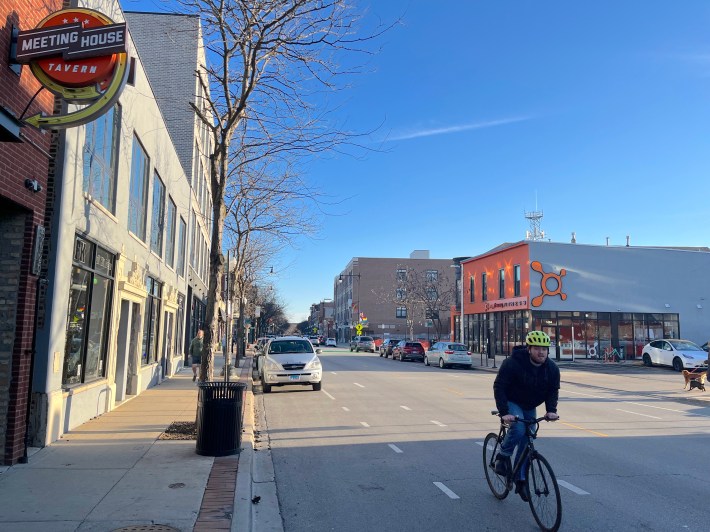
Orr said the goal is to have a large-scale community meeting in late April or early May, likely in the Chase Park fieldhouse, where CDOT will present a more fully fleshed-out proposal based on community feedback. "And that's where an actual decision would be made, like, are we moving forward with or are we not."
The reaction from businesses owners has been mixed, Orr said, noting that some have been excited about what's proposed, while others have concerns that he's sympathetic to. "I think that makes sense to be very risk-averse if you're a small business. I wouldn't want to portray any business that's skeptical or concerned in a negative light, in general."
During the Q & A segment, attendee Sunny Baxter voiced strong support for the street redesign idea. "Overall, y'all have got the right idea, talking about narrowing the lanes, reducing the oversupply of parking," she said. "Whatever businesses are worried about a loss of parking negatively impacting them, is there a way that we can get them to understand that a bunch of negative parking spaces contributes to this atmosphere of disinvestment and makes people less likely to want to go there?"
Orr said the ward has been sharing CDOT's findings that, after bike lanes are installed (protected or not), most economic indicators are neutral or positive. But he reiterated that he feels it's understandable that some merchants are are dubious about the parking conversions "'cause it's your livelihood, and you don't necessarily have a second shot."

"But a lot [of the businesses] are excited, and a lot are excited about having a pedestrian-oriented corridor that is a destination," he added. "Because there are more people who living on Clark, and there's more development... so there are some folks who are excited about... how the corridor has transformed over the last five years, and they're looking forward to more of that."
Next was a comment from a local homeowner named John who said he often bikes, rides buses, and drives on the corridor. "It warms my heart, almost makes me cry at the thought of taking my kid on the street and knowing that I'm not going to have to worry about getting hit."
Likewise, an attendee named Jake said he's "super-enthused" about the project. "Like a lot of folks, I've been clipped on my bike on Clark, so I'd be happy to be in a bike lane instead, so I love everything happening here."
Orr said that, if all goes well, construction of the Uptown Extension will start this fall. So there's reason to be optimistic that soon traveling on Clark in Uptown will be a safer and more pleasant experience, whether you're pedaling a bike, walking, riding a bus, or driving a "Little Red Corvette." (Sorry.)
Read previous SBC coverage of the project and the recent CBGN! bike ride to support it.

Did you appreciate this post? Streetsblog Chicago is currently fundraising to help cover our 2025-26 budget. If you appreciate our reporting and advocacy on local sustainable transportation issues, please consider making a tax-deductible donation here. Thank you!
